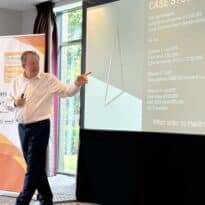Speculation abounds around potential changes to pension taxation ahead of the 30 October Budget, including changing to flat rate pension tax relief. It may seem simple, but as with most things taxation, it’s not. Josh Croft, senior technical consultant at AJ Bell explains.
As we move towards the new chancellor’s first budget, speculation around where any tax rises and cuts in tax incentives might fall have intensified. One area that is often discussed ahead of a budget is the generous tax perks offered from pensions.
A recurring theme is the calls to review how pension tax relief is granted, particularly as the total net cost of pension tax and National Insurance contributions relief hit £48.7 billion in 2022/23, up slightly from £47.6 billion a year earlier, according to the latest statistics published by HMRC.
For a government looking to balance the books the amounts potentially available here will look attractive. One common suggestion is to introduce a flat rate for pension tax relief, regardless of an individual’s earnings. Under the current system tax relief on pension contributions is provided at the taxpayer’s marginal rate of income tax, with estimates that over 60% of the tax relief is going to individuals paying the higher and additional rate of tax.
Under a proposed flat rate system everyone would receive tax relief at the same rate, For example, the government could set this flat rate at 25% or 30%. Setting a flat rate above the current 20% basic rate would benefit lower earners by increasing the amounts they receive into their pensions at the expense of higher earners who would have higher tax bills to pay. Politically you’d think this would be easy to sell – you can argue that you are making the system fairer while at the same time reducing the overall costs.
The simple way to achieve this would be to prevent individuals from claiming additional tax relief through their tax return. Instead, they would just receive the standard flat rate relief directly credited into their pension. However, this simplistic view overlooks the fact that the largest expense associated with tax relief on pension contributions isn’t driven by member contributions to schemes, but rather by employer contributions to defined contribution schemes and the value of the tax relief on accruals in defined benefit schemes.
Any proposal would also need to address the issue of schemes that operate under the ‘net pay’ contribution method. Net pay is a method of receiving tax relief on personal pension contributions that can only be used by occupational pension schemes. Under net pay the employer deducts employees’ personal pension contributions from their gross pay before tax is calculated under PAYE. The full tax relief is given up front, so higher and additional rate taxpayers will get relief on the amount paid without having to claim back the extra tax relief via self-assessment.
Moving to a flat rate would likely mean higher rate taxpayers in net pay schemes would face a tax bill on their contributions to claw back their automatic tax relief from 40% to the level any flat rate is set. This would apply to many public sector workers who are members of DB schemes, which would likely be very unpopular.
The use of salary sacrifice would also need to be considered, as exchanging salary for employer pension contributions also automatically gives the individual the highest rate of relief. This would either need to be clawed back, or the practice would have to be banned altogether.
While a flat rate relief system would be simpler to understand and potentially be seen as fairer since everyone receives the same level of support, the design of any such system must carefully consider how it would be implemented in all types of pension schemes.
These proposals could potentially save the government some money, but they do carry the risk of introducing more administrative complexity, discouraging pension saving for some, and there would likely be a backlash from those people who end up negatively impacted by any changes.
Main image: drew-dizzy-graham-s4dfrh7hdDU-unsplash






























